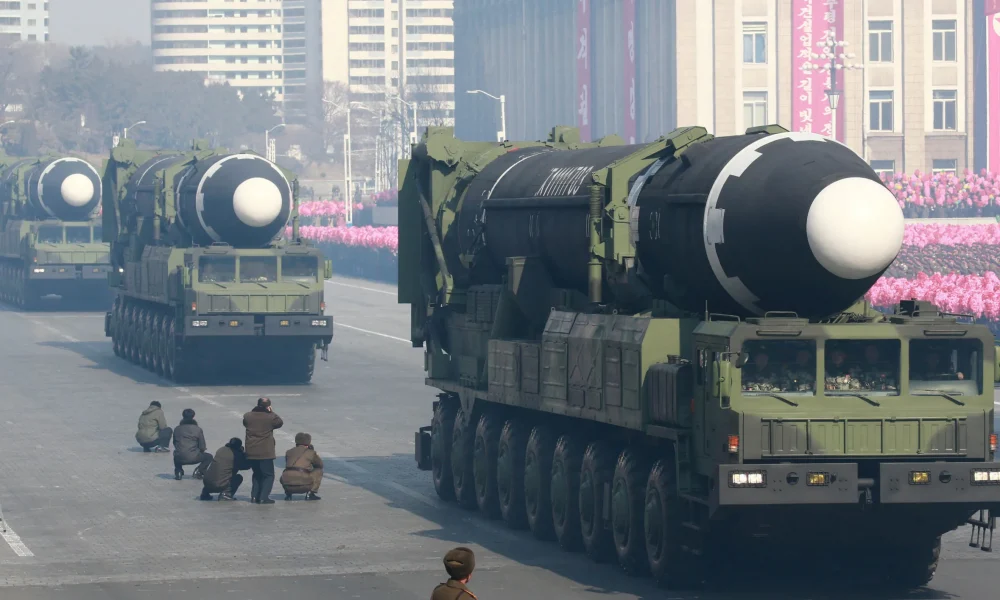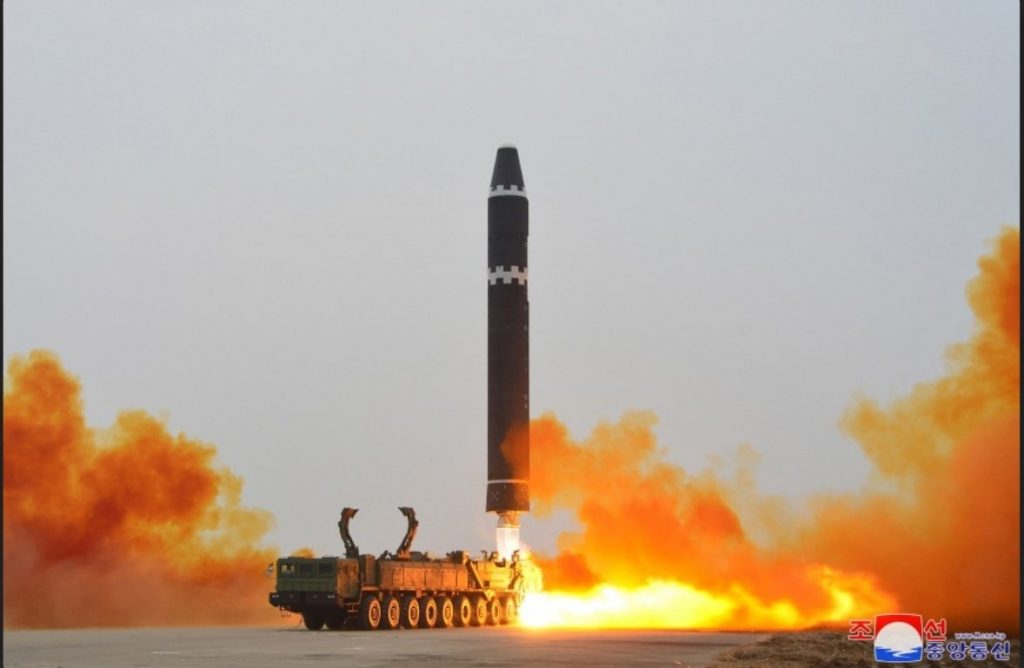Asia
Technical and political messages of the “Hwasong-15” test

The Democratic People’s Republic of Korea (DPRK) conducted a Hwasong-15 intercontinental ballistic missile (ICBM) test on Saturday as a warning to the United States and South Korea and to test the readiness of special units under its newly formed Missile General Bureau.
“The military threats of the United States and South Korea are becoming too serious to be ignored,” the Korean Central News Agency (KCNA) reported on Sunday, noting that it has demonstrated its “efforts to turn its capacity of fatal nuclear counterattack on hostile forces.”
Kim Yo Jong, sister of the country’s leader Kim Jong Un, had warned Seoul and Washington of a “overwhelming counteraction” to “hostility” in a separate statement published by KCNA on Sunday. South Korean fighter jets flew alongside American F-16 fighter jets to escort South Korean warplanes and a B-1B bomber, the South Korean Joint Chiefs of Staff said on Sunday.
“The training aimed at demonstrating the timely and immediate deployment of the U.S. extended deterrence assets to the Korean Peninsula,” the statement said.
Following a joint flight report from South Korea, two short-range ballistic missiles fired from Sukchon areas in South Pyongan province of the DPRK into the East Sea at 06:59 and 07:04 am on February 20, 2023. It is reported that the artillery unit of the Korean People’s Army fired two shots from the 600-mm multiple rocket launcher during firing drills, and that they flew 395 km and 337 km, respectively.
Extended deterrence: Hwasong-15 (KN-22)

The missile, which was launched from Pyongyang International Airport on Saturday at 17.22 KST and hit a target in international waters 989 km away within the borders of the Sea of Japan, reportedly achieved maximum performance. The missile set a new record with a total of 66 minutes of flight at an altitude of about 5,768 km.
The DPRK began developing the Hwasong-15 sometime before 2017. The U.S. intelligence community had pointed out that it was aware of the development of the Hwasong-15 before its first test, and that the design was entirely in partnership with the Hwasong-14 and Hwasong-12 missile designs.
The HWASONG-15, which was first tested for the first time on November 28, 2017, was flying for 53 minutes to reach a maximum height of 4,500 km and 960 km.
The Hwasong-15 was first tested on November 28, 2017, from a site 30 km north of Pyongyang, revealing changes in the engine and launch values. In its first test, the missile flew for 53 minutes, reaching a maximum altitude of 4,500 km and a range of 960 km. Thus, it was reported that the missile could travel up to 10,000 km, enough to hold the continental United States at risk.
Technical development process and increased range
Although the missile appears to employ two of the Hwasong-14’s “Korean-style high-thrust” engines in its first stage, it is powered by Pektusan-B variant engines, an indigenously produced variant of the Soviet-designed RD-250 engine, each of which exerts 48 tons of thrust.
This increases the take-off thrust compared to the HS-14 only to 170% (788 kN SL) because the steering engines are missing. The function of the steering engines is provided through vectors on the main engine. The propulsion of the second stage, which will take place after 129 seconds, is completely unclear. The second stage is probably to be powered by a down-scaled Unha-3 variant engine. Considering these values, it points to a longer range than the first test, with engines and missile technology being developed day by day. Statements, flight values and technical information from Pyongyang include a range of 13,000 km.
Source: N.Brügge
On Saturday, Japanese Defense Minister Yasukazu Hamada said that “the missile was estimated to have a range of over 14,000 km, in this case, that would put the entire United States within its range,” confirming the progress of the DPRK missile development process.
Kim Yo-jong vows unprecedented strong responses
Speaking after the launch, U.S. Secretary of State Antony Blinken said that “the United States are prepared to engage with North Korea without any preconditions.”
Kim Yo-jong, sister of DPRK leader Kim Jong-un and chairman of the State Affairs Commission, made harsh statements.
Kim Yo-jong – (DPRK) Deputy Department Director of the Publicity and Information Department of the Workers’ Party of Korea
Kim said they never trusted Washington’s repeated assurances that it did not have a hostile policy towards Pyongyang, adding: “I warn that we will watch every movement of the enemy and take corresponding and very powerful and overwhelming counteractions against every move hostile to us.”
Addressing their stance on South Korea, Kim reassured that “intercontinental missiles will not be aimed at Seoul,” adding that the DPRK leadership “still has no intention of engaging in dialogue.”
South Korean government wants to gain momentum on ‘nuclear weapons’
The South Korean ruling People Power Party (PPP) warned that if Pyongyang “continues its military provocations, South Korea will accelerate its acquisition of its own nuclear weapons.”
Party spokesman Chung Jin-suk said: “We have a clear option on North Korea’s nuclear weapons. We must first secure a concrete nuclear deterrence.”